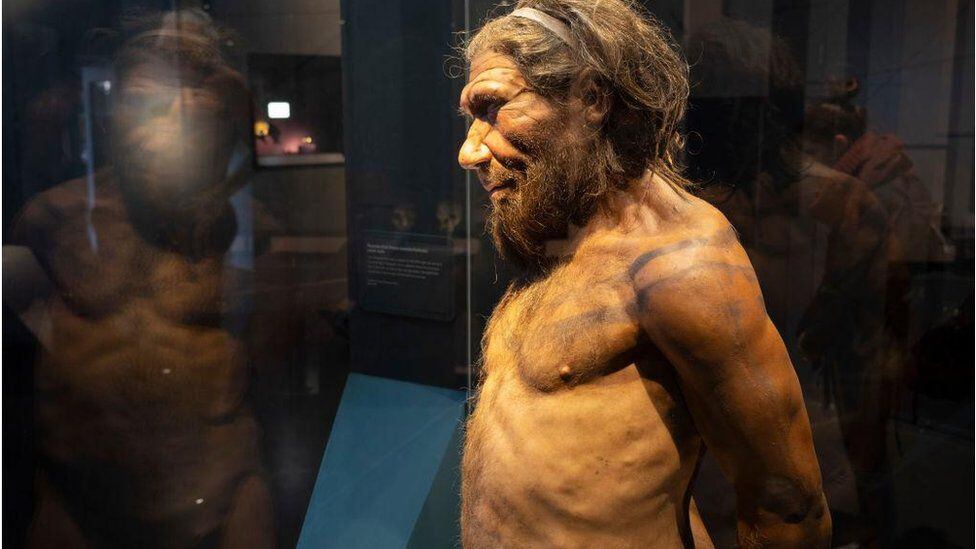The miscegenation of neanderthals with Homo sapiens it could have played a key role in the extinction of the “cousins” of humans.
That is one of the conclusions of a new study in which it is theorized that such a crossing may have reduced the number of Neanderthals breeding with each otherwhich would have eventually led to their demise.
LOOK: What is “woke” and why this term has generated a cultural and political battle in the US.
“For a long time, the leading theory was that there was a lot of competition between Homo sapiens and Neanderthals for resources,” Dr. Lucile Cretewho was part of the research published in the journal Palaeoanthropology.
But the Create studio and the teacher Chris Stringera researcher at the Natural History Museum in London, suggests that it was not the violence, but the mixture of populations which weakened the Neanderthal gene pool.
“We propose that this behavior could have led to the extinction of Neanderthals if they regularly bred with Homo sapiens, which could have eroded their population until they disappeared,” Stringer said.
The Neanderthal DNA can be found in everyone alive todayincluding people of African descent, whose ancestors are not believed to have been in direct contact with this group.
Neanderthals and Homo sapiens evolved in different areas of the world after separating from each other about 600,000 years ago.
Meanwhile he Homo sapiens evolved into Africathe neanderthals they lived in Europe and Asia.
“Recent discoveries show that Homo sapiens were in Europe 50,000 to 60,000 years ago, which means they were in Europe at the same time as Neanderthals for much longer than we previously thought,” Crete told the BBC.
How do we know Homo sapiens and Neanderthals interbred?
Neanderthal genomes were traced to the Homo sapiens genome, but not the other way aroundsays the new research.
“It looks to be an exchange of genes, but only in one senseCrete explained.
We already knew that the two species interbred. If you were born outside of Africa, approximately 2% of your genome is derived from Neanderthals.
But Crete and Stringer dug deeper into the matter by looking at what is known about the 32 Neanderthal genomes that have been discovered and sequenced to date.
The two scientists suggest that the success of interbreeding depended on the exact pair that was reproducing.
“But we don’t know how to explain that. It could be due to the available data we have or the way the hybridization (the process of mixing two species),” Crete said.
“For some species of birds and mammals, hybridization sometimes doesn’t work both ways: it can be difficult for a species to produce fertile offspring.”
The scientist hopes that more Neanderthal fossils can be found and analyzed in the future.
“The more we can sequence and analyze, the more we can test these theories,” he said.
sexual encounters

Another theory that Crete and Stringer proposed in their study is that not all sexual encounters could have been consensual.
“Perhaps Homo sapiens went out looking for females or the other way around and force was used to find fertile representatives from the other group,” Crete thinks.
That kind of behavior can also be seen in some chimpanzees. “If the males don’t have enough reproductive females in their group, they might go to the other group and steal them so they can keep expanding,” he explains.
But little is actually known about such encounters.
Scientists believe that it was not easy for Neanderthals and Homo sapiens to communicatesince they were quite different.
“They probably couldn’t produce the same kinds of sounds, they didn’t have the same kinds of articulate speech, their brains were structured differently,” Crete says.
His physical appearance was also different.
“Neanderthals were quite robust, strongly built, with shorter arms and legs and a characteristic prominent brow ridge over the eyes,” says the expert.

However, it is still not clear how different they were male and female Neanderthals.
“Skeletons are generally fragmented and broken, and we don’t have many pelvises to compare and differentiate between the two,” Crete notes.
Despite many unknowns, the scientist is excited about possible future discoveries.
“The new methods made some things possible that we couldn’t even have imagined before,” he says.
“It’s like a gigantic puzzle. Sometimes it gets bigger and bigger with new discoveries as change our way of thinking”.
Source: Elcomercio
I, Ronald Payne, am a journalist and author who dedicated his life to telling the stories that need to be said. I have over 7 years of experience as a reporter and editor, covering everything from politics to business to crime.

:quality(75)/cloudfront-us-east-1.images.arcpublishing.com/elcomercio/GIYDEMRNGEYS2MBWKQYDAORSGA.jpg)

:quality(75)/cloudfront-us-east-1.images.arcpublishing.com/elcomercio/Q7J376NFEREA3MLEIFBEENMGYU.jpg)
:quality(75)/cloudfront-us-east-1.images.arcpublishing.com/elcomercio/RGHWK5LMD5H7XH6OWO4MG7AAY4.jpg)

:quality(75)/cloudfront-us-east-1.images.arcpublishing.com/elcomercio/RGIGDZ6JSVB6VCEJAWMFHU6EO4.jpg)
